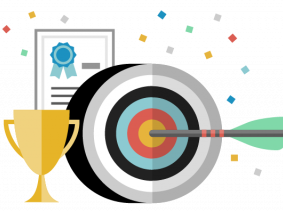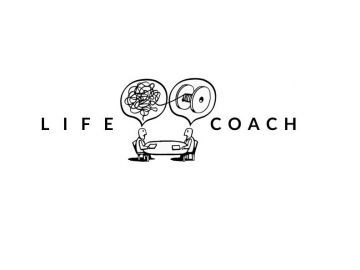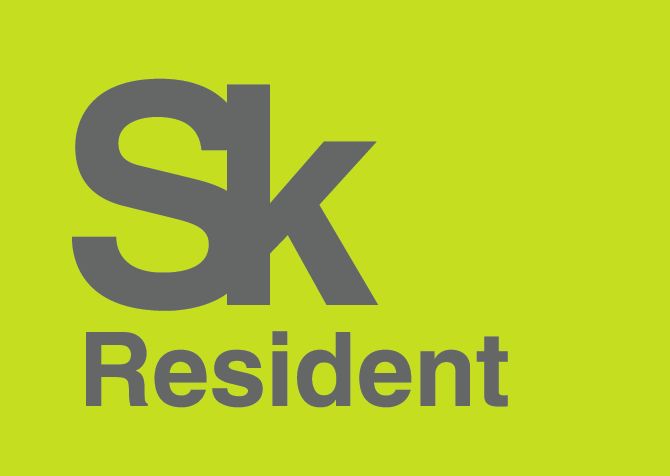Facilitation sessions
The team of facilitators conducts facilitation sessions to solve various problems in groups of 6 to 100 people.
Facilitation is a dynamic and visual process for group solving various business problems, finding optimal solutions. All session participants are involved in the process. Participants are carriers of practical and theoretical knowledge.
What is a facilitator? This is a designer, organizer, catalyst for the process of making a group decision on various topical topics. The main task of the facilitator is to ensure unity of views, consistency, inspiration for the implementation of changes.
What is facilitation used for?
• Strategic sessions for visioning, problem solving, evaluation analysis, project management, new product development, concrete change plans.
• A new format of learning from each other, for example on the topic:
"How to burn, but not burn out at work", "How to become a Champion in sales", "How to arrange deliveries" and many more. others
• Establishment of business interaction between departments, people, conflict management, team building, motivation.
• Development of new ideas on any issue relevant to the company.
• Development of the mission, values, corporate competencies.
Methods used in facilitation sessions
We use over 20 methods, including Pinpoint technology.
The essence of the method is the collection and classification of ideas, the selection of the best according to the criteria.
Similar method: idea flow (Idea-log), only done differently.
Method: Yellow Pages
The essence of the method: compiling a matrix of contacts within the group on topics of interest.
Method: Silent Waiter
Used to develop specific proposals and risk management program.
Method: World Cafe
This method allows individual mini-groups to focus on developing proposals on a particular issue, and then supplement their ideas with the ideas of colleagues from other groups in a certain way.
Method: Retrospective
The essence of the method: analysis of past experience with conclusions for the future.
Developing a development strategy
Stages of work:
- Analysis of enterprise development indicators and identification of trends and dependencies
- SWOT analysis, PEST analysis, product and competitive analysis
- Developing a target business model
- Development of a tree of goals and a structure of responsibility between top managers
- Implementation of a strategic planning system
- Deployment support
Optimization of enterprise performance
Watch the presentation on enterprise optimization:

Improving labor productivity in the enterprise
Lean
- Lean is aimed at:
- Shortening Lead Time
- Increased inventory turnover
- Increasing the competence of employees
- Increasing production and service flexibility
- Quality enhancement
- Reducing production costs
- Inventory reduction
- Reduce return on investment (ROI)
Stages of work:
- Flow Mapping
- Loss detection
- Designing production (labor) flows without losses
- Optimizing the control structure for flow
- Standardization of work
- Introducing visual management tools
- Deployment support
Design and optimization of business processes
Stages of work:
- Description of business processes "as is"
- Process optimization
- Describing models "as it should be"
- Development of regulations
- Staff training
- Preparation for automation, assistance in choosing an IT contractor
- Automation curation
Development and optimization of organizational structure
Stages of work:
- Developing the control structure
- Development of a matrix of responsibility and a system of distribution of powers at different levels of management
- Design staffing in accordance with the requirements of professional standards and scope of work
- Development of the regulation on the organizational structure
- Development of regulations on subdivisions
- Development of job descriptions
- Deployment support
Optimization of personnel costs
Developing a pay and incentive system
Stages of work:
- Development of the design of the remuneration system, Concepts (fixed part of the remuneration, variable, allowances and social package)
- Designing the tariff part (grades)
- Designing KPIs and bonus calculation mechanisms
- Designing a Benefit Distribution System
- Preparation of regulatory documents
- Deployment support
Labor rationing and headcount calculations
Stages of work:
- Developing a methodology for rationing labor costs
- Development of labor standards
- Number calculation
- Development of a mathematical model of headcount planning
Developing a motivation system
Building and reorganizing corporate culture
Introducing professional standards
HR audit
What is it? Research - evaluation of the effectiveness of the corporate personnel management system. The focus is on the quality of hr-processes, the efficiency of the structural unit that solves the tasks of hr-management.
What is it for? The direct and indirect objectives of an audit can be:
- Revision of the strategy in the field of human resource management, qualitative update of personnel policies.
- Preparing to implement HR partnerships
- Assessing the readiness of HR practitioners for organizational change.
- Optimization of the number of employees of the Company, a structural unit that solves the tasks of personnel management.
- Analysis of the depth of application of standards, regulations, regulations and other regulatory documents in the case when the activities of the entire Company are subject to mandatory regulation at the federal or international level (for example, aviation)
- Assessment of the quality of performance of hr-functions, indirect assessment of the level of professionalism of hr-employees.
How is it done? A team of auditors-experts in the field of personnel management works step by step. Develops research program and audit tools. Applies a number of methods of sociological research to obtain complete and reliable information about the quality of HR-tasks in the Company: conducts a series of interviews, included and non-included observation, organizes problem meetings, interviews employees, analyzes documents - local regulations, planning and reporting documentation, methodological materials. Processes the received information and creates a conclusion.
What is the result? The result is an audit report that describes in detail the merits of the existing corporate personnel management system, its relationship with the Company's business strategy, the potential for development and non-optimality, identified areas of risk, points of increased attention and control by the Client. The conclusion includes a detailed list of recommendations aimed at improving the quality of the human resource management system. The recommendations are both strategic and tactical.
The company is ready to provide support in the implementation of recommendations, accompanying the change process.
Audit for HR
Audit of HR practices – a tool for providing objective information about the current level of development of the human resource management (HRM) system in the Company. < strong>
Your goals:
- Qualitative updating of personnel policies based on the revision of the HRM strategy
- Assessing the readiness of HR practitioners for organizational change
- Reorganization of the structural unit that solves the tasks of personnel management
- Analysis of the depth of application of standards, regulations, regulations and other regulatory documents in the case when the activities of the entire Company are subject to mandatory regulation at the federal / international level
Results for you:
- Objective information about the HRM system: strengths, "hot" areas - requiring response
- Strategic and tactical level recommendations to improve the performance of the HRM system
Research methods:
- Document and reporting analysis
- Results of previous internal surveys (questionnaires), results of external sociological surveys, individual interviews with department employees
What can be audited - auditables:
- Company's workforce
- Methods and principles of personnel management
- Specific hr direction
Building productivity centers
Building a system for assessing and developing personnel in a company
Loyalty and satisfaction survey
What is it? A study that allows you to obtain information about the quality of organizational behavior management, evaluate motivational programs that make up corporate culture and, in the future, improve them.
What is it for? Basic research objectives:
- Identify the causes of staff turnover.
- Rating the most and least favourable. Determine which departments are doing well and which need urgent change action
- Detect hotspots in organizational behavior management
How is it done? Consultants, together with the working group of the Client's Company, determine the objectives of the study and draw up a survey program. The basic blocks are:
- Satisfaction with the work in the industry, the Company, attitude towards the goals of the Company.
- Features of relations with the immediate supervisor, colleagues.
- Evaluation of personal perspectives, diversity in work.
- Working conditions - satisfaction with remuneration, recognition of merit, non-material motivation, conditions for organizing the workplace.
The questionnaire is being automated. After the PR campaign of the study, all its participants electronically fill out a questionnaire at their workplaces. The study is conducted on conditions of complete anonymity. The results of the survey are analyzed by consultants, processed and presented in the form of a report.
The Client's company receives technical support throughout the study.
What is the result? Very valuable information for the Company for making timely and informed management decisions. The report is accompanied by graphic material - diagrams, graphs, visually confirming the data obtained during the study. Specially developed practical recommendations are aimed at positive changes in the researchareas of organizational behavior.
The company is ready to provide support in the implementation of recommendations, accompanying the change process.
An example of a report on the results of a study on job satisfaction in the Company Report on the results of a study


